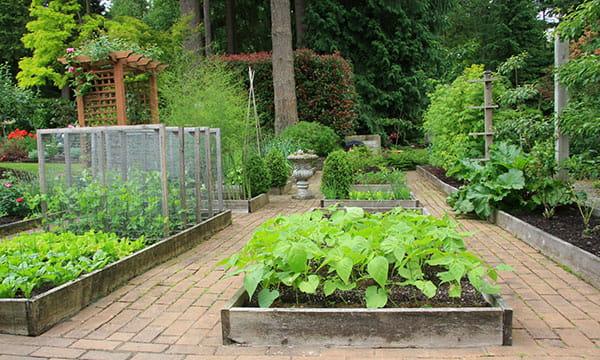Raised bed gardening: OSU Extension Service offers advice on building and materials
Now that it's gardening season, I'm getting weekly stories from the experts at Oregon State University Extension Service, written by Denise Ruttan, public service communications specialist. The latest is about what to use for raised beds, with Ross Penhallegon, extension horticulturist, as the source.
"By building raised beds, you instantaneously can have good garden loam," Penhallegon says. "Raised beds answer the question of how we garden in inhospitable areas that are too sandy, too wet or have too much clay."
Tips:
-- Build raised beds this month. Decide which plants you're going to grow first and find out how deep their roots grow. The deeper they go, the taller the bed should be, generally 6 to 12 inches. Make beds 3 feet across so you can reach into the middle for easy maintenance.
-- Once the bed is built, fill halfway with a soil mix containing sandy loam. Using a three-tined garden fork, mix in an equal amount of organic matter such as compost, leaf mulch or animal manure.
-- After the first season, layer 2 to 4 inches of compost on top of the soil in October. Then in April, mix the compost into the soil using a garden fork.
Materials suggested by Penhallegon to use for building beds.

-- Raw wood: Cedar is a good choice because it is fairly resilient. Coat boards with exterior latex paint, which is not as strong as chemical preservatives and can resist moisture. In choosing between raw and treated wood, decide how often you want to replace the wood.
-- Treated wood: Wood that is treated with preservatives lasts longer in rainy climates. Research shows that there is little likelihood of wood-preserving substances contaminating the soil. Nevertheless, he still advised covering the wood with plastic sheeting or exterior latex paint to reduce the risk.
-- Old tires: Old tires stacked on top of each other work especially well for potatoes.
-- Concrete blocks: Concrete lasts a long time, absorbs heat well and is water-resistant. Stack one, two or three blocks high. Keep in mind that it is more expensive than wood. Look for inexpensive blocks that are cracked or chipped, he said.
-- Railroad ties: Whether railroad ties are safe to use is hotly debated among researchers and the general public. "It's been shown that there is very little creosote leakage out of railroad ties," he said, "but that depends on how old they are, whether they're damaged and how long they've been around. It's very tough to say absolutes." He recommends covering railroad ties with plastic sheeting to protect your plants.
For more information, check out the OSU Extension Service's
"Growing Your Own" guide;
"Raised Bed Gardening;"and
"How to Build a Raised Bed Cloche."-- Kym Pokorny
Note to readers: if you purchase something through one of our affiliate links we may earn a commission.







